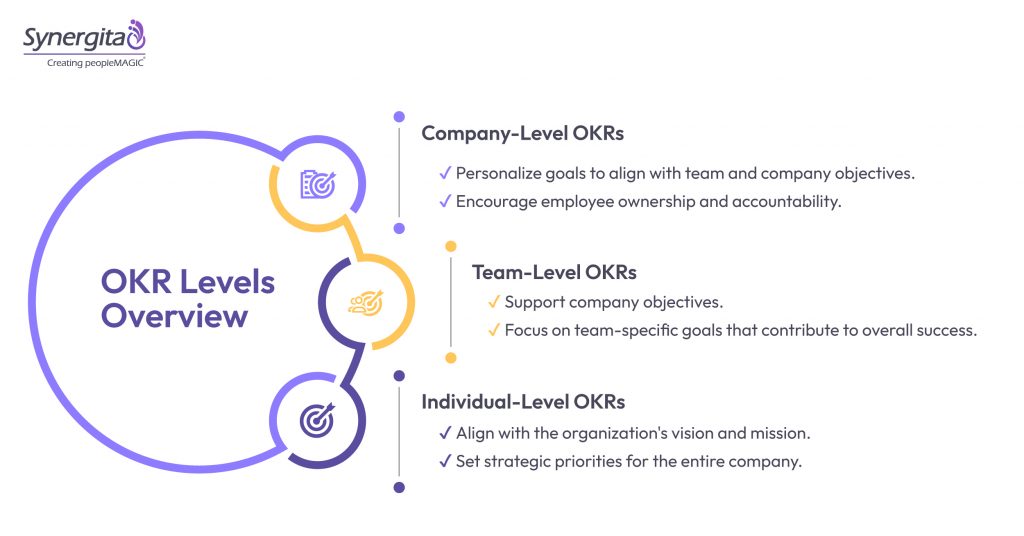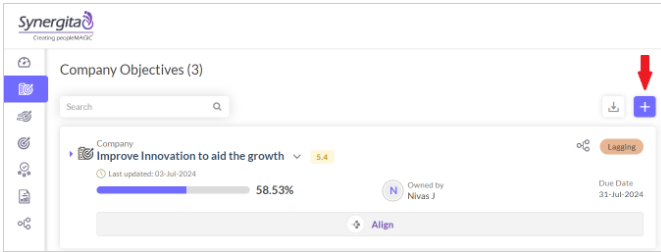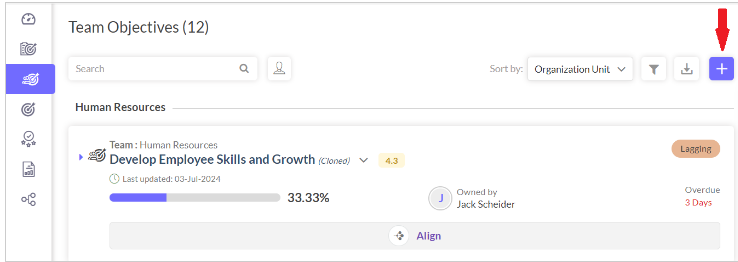Businesses are missing the mark — big time. A recent Gartner survey reveals that a staggering 80% of key commercial activities happen without meaningful collaboration
between marketing and sales functions. Worse, 90% of leaders from these two teams admit their priorities are in direct conflict with one another. The result? Chaotic decision-making, missed opportunities, and a serious drag on growth.
But here’s the kicker: organizations that align their teams through shared insights and common goals are 2.3 times more likely to see higher sales conversion rates. And it’s not just marketing and sales that need to work together. From the executive level to individual contributors, alignment across every part of the company is crucial to driving sustainable success. That’s where OKRs (objectives and key results) come in, providing a framework to cut through dysfunction and bring the entire organization onto the same page—boosting collaboration, clarity, and growth at all levels.
Achieving alignment and focus on every level of an organization is essential for success. OKR is not just a goal-setting tool, it’s a methodology to measure progress through actionable key results. From the boardroom to individual contributors, the power of OKRs lies in their ability to align company-wide goals with team and individual efforts, creating a unified drive toward success.
In 2023, 46.7% of organizations reported using OKRs across their entire structure, marking a notable 12% increase from the previous year. This surge reflects a growing recognition of the power of OKRs in driving alignment, focus, and measurable success from the company level down to teams and individuals, shows the OKR International SOIR. As more organizations adopt OKRs, the question becomes: how can your business leverage this framework to maximize its potential at every level?

Benefits of OKRs at the Company Level

1. Alignment across the organization: Company-wide OKRs serve as a guiding light, ensuring that every department and team is working towards common goals. This strategic alignment helps organizations remain focused on their long-term vision and ensures that daily operations and short-term goals are contributing to that vision.
2. Transparency: When objectives and key results are visible across the company, everyone understands the company’s priorities and their role in achieving them. This visibility fosters accountability, as each team and individual is aware of how their work impacts the organization’s success. It also helps leadership identify areas that require attention, allowing for timely intervention and course correction.
3. Agility in responding to change: OKRs allow companies to be more agile by breaking down long-term objectives into shorter, measurable key results. By setting OKRs quarterly, businesses can quickly adapt to market shifts or internal challenges, revisiting and adjusting their goals as needed. This continuous feedback loop ensures that the company remains on track and responsive to new developments.
Benefits of OKRS for Teams

1. Enhanced collaboration: When teams have shared objectives, cross-functional coordination becomes more seamless, leading to improved teamwork. The benefits of OKRs for managers allow for aligned key results. Hence teams are better able to pool their skills and resources, leading to more innovative and efficient solutions.
2. Clear focus: Benefits of OKRs for teams include end of the burden of competing priorities. Instead, they have a clear focus on the tasks that have a direct impact on the company’s objectives. This helps in prioritizing work that adds the most value, ensuring that teams don’t spread themselves too thin or get distracted by low-priority tasks. The result is a more focused and productive team effort.
3. Measurable Progress: OKRs encourage teams to set ambitious, yet achievable goals. With measurable key results in place, teams can track their progress in real-time, which keeps motivation high. Knowing how to directly contribute to the company’s success imparts a sense of achievement. This measurable progress provides momentum, as teams are more likely to push themselves to reach or even exceed their goals.
Benefits of Using OKRs at the Individual Level
1. Individual Accountability: For individuals, OKRs bring clarity to their role within the organization. With clearly defined objectives and measurable outcomes, benefits of OKRs for employees can be ownership of responsibilities and witnessing how their work directly contributes to team and company success. This sense of ownership boosts personal accountability, as individuals understand the impact of their work on broader organizational goals.
2. Professional growth: When employees set challenging yet achievable objectives, they push themselves to develop new skills and expand their capabilities. Whether it’s mastering a new tool or leading a project, OKRs encourage individuals to continuously improve and take on new challenges that align with their career aspirations.
3. Improved performance: The continuous feedback inherent in the OKR process ensures that employees are regularly assessing their performance and receiving feedback. This ongoing assessment helps employees stay focused, improve their performance, and remain engaged with their work. OKRs also eliminate ambiguity around expectations, which can often be a source of frustration or disengagement.
How to Write Effective OKRs
Writing effective OKRs is crucial for driving organizational success and ensuring alignment across all levels of a business. Well-crafted OKRs provide clarity and direction, allowing teams and individuals to focus on what truly matters. Good OKRs being a sense of ownership and accountability, motivating employees to strive for excellence and encouraging collaboration across departments. By articulating clear objectives and key results, organizations can create a shared understanding of goals, enhancing overall performance and driving growth.
OKR Structure by Level Examples
Company-Level Objective: Become the market leader in sustainable packaging solutions.
KR1: Achieve a 30% market share in the sustainable packaging sector by the end of Q4.
KR2: Launch three new eco-friendly packaging products by Q2.
KR3: Increase revenue from sustainable products by 25%.
Team-Level Objective: Enhance customer satisfaction within the support team.
KR1: Achieve a customer satisfaction score of 90% or higher in quarterly surveys.
KR2: Reduce average response time to customer inquiries to under 2 hours.
KR3: Implement a new ticketing system by the end of Q1 to streamline support processes.
Individual-Level Objective: Develop leadership skills to prepare for a managerial role.
KR1: Finish a leadership training program by Q3.
KR2: Mentor two junior team members and receive positive feedback from them.
KR3: Lead three team projects successfully by the end of the year, with a minimum satisfaction rating of 85% from team members.
Slay Innovation with the Flexibility of OKRs
Encouraging autonomy and innovation are essential for employee engagement and organizational growth. When individuals are empowered to create their own OKRs, guided by the overarching company objectives, they gain a sense of ownership over their work. This autonomy not only motivates employees to take initiative but also allows them to tailor their goals to their unique strengths and areas of interest. By aligning personal objectives with company goals, employees can drive innovation and contribute meaningfully to the organization, ultimately leading to greater job satisfaction and enhanced performance. To facilitate this alignment and clarity, Synergita OKR’s Hierarchy Tree feature is invaluable. This feature visually represents the relationship between individual, team, and company OKRs, making it easier for employees to understand how their personal goals contribute to the organization’s success. With a clear view of the hierarchy, employees can confidently set ambitious yet achievable objectives, knowing they are aligned with the company’s strategic vision. This combination of autonomy and structured support fosters a culture of flexibility and innovation, driving the entire organization toward shared success.
Whether you’re looking to align strategic goals, drive team performance, or foster individual growth, OKRs provide a flexible and effective approach that empowers the entire organization to work toward a common vision. If you are looking to embark on your journey to achieving better productivity, then try Synergita OKR!
